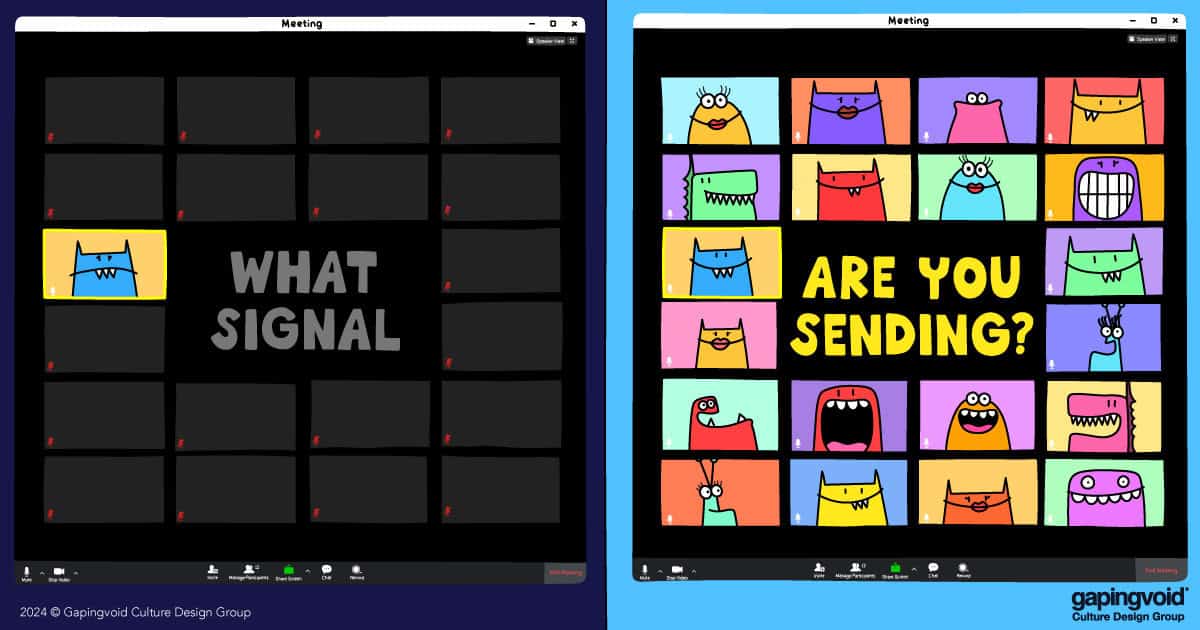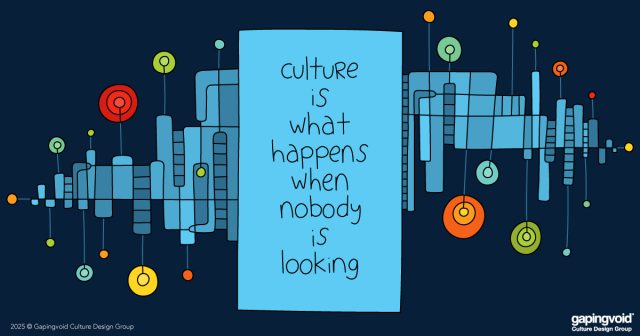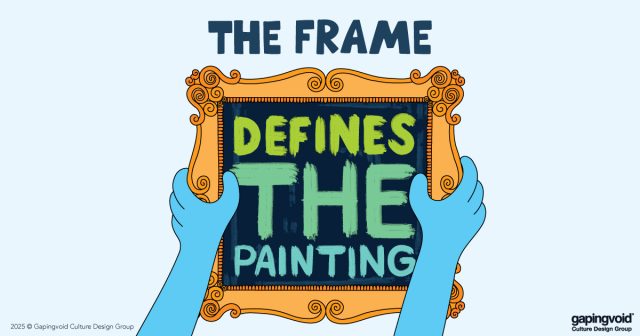
Little things matter. A lot. (Or they don’t, until they do).
A year-long study of 450,000 employees across 40 million Zoom meetings revealed a not-so-shocking link: Those who left their jobs within a year of the sample period had their cameras on in only 18.4% of small group meetings. Those who stayed? 32.5%
Almost double.
This isn’t about shaming camera-off folks, it’s about understanding the ripple effects of our choices.
The first is self-signaling.
When we consistently keep our cameras off, we’re not just sending a message to others, we’re sending one to ourselves.
As James Clear points out, actions shape our identities which in turn shapes our actions. It’s a loop, which can be a vicious one.
Are we becoming the “kind of person who keeps their camera off?” and what else might that person do?
Then, there’s signaling to others. We’re social copying machines. Behavior spreads. One camera off can lead to another and another, and before we know it, we’re having a meeting with a bunch of black squares.
These two loops feed each other in subtle yet powerful ways. The solution doesn’t have to be a mandate – it can be cultural. Intentionally designing “cameras on” as a norm isn’t about surveillance or forced participation, it’s about connection.
As the old Buddhist phrase goes, “How you do anything is how you do everything.” Zoom camera etiquette isn’t about Zoom, it’s a piece of our culture. A sometimes frozen or pixelated piece, sure, but one that could save a lot of money on churning team members.
More importantly, it’s about creating a digital place where people actually want to be seen, heard, and challenged. Even if they haven’t showered in three days.
What signals did you send today?



